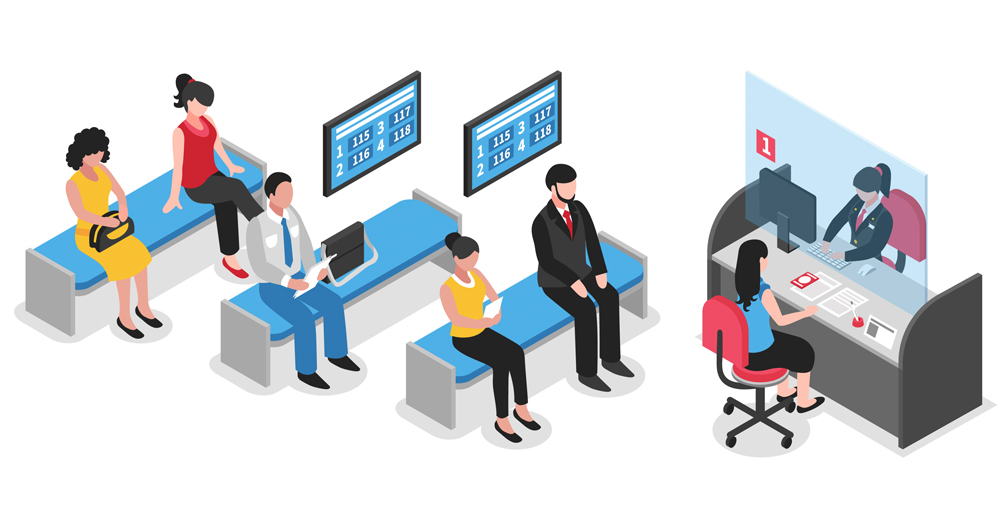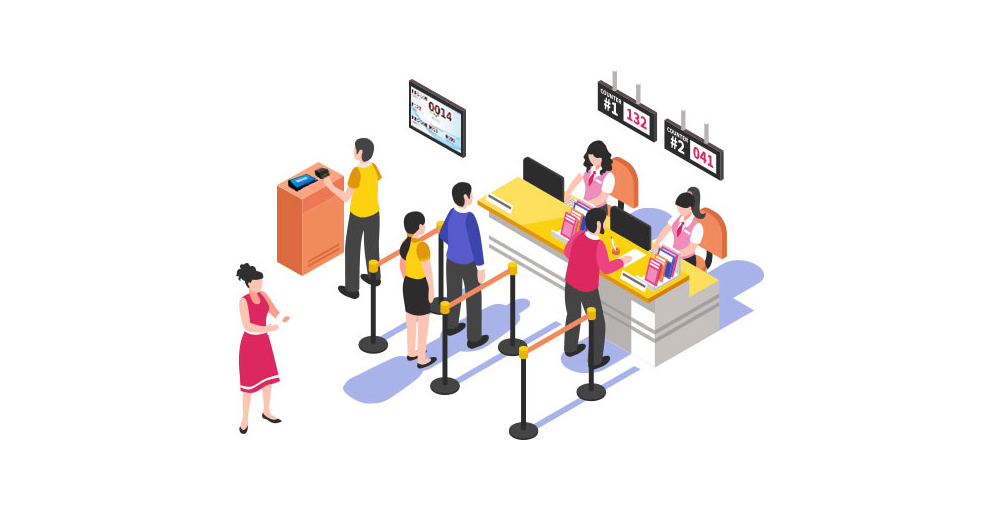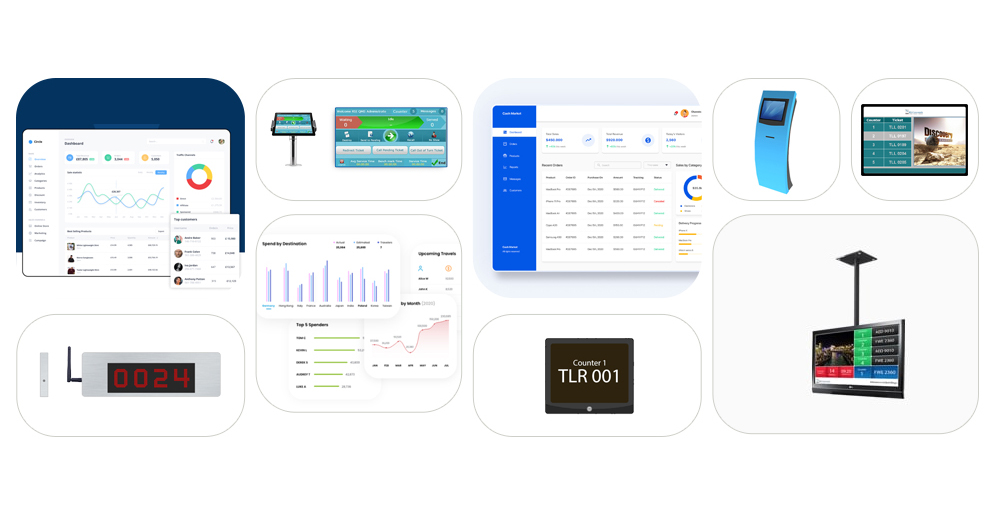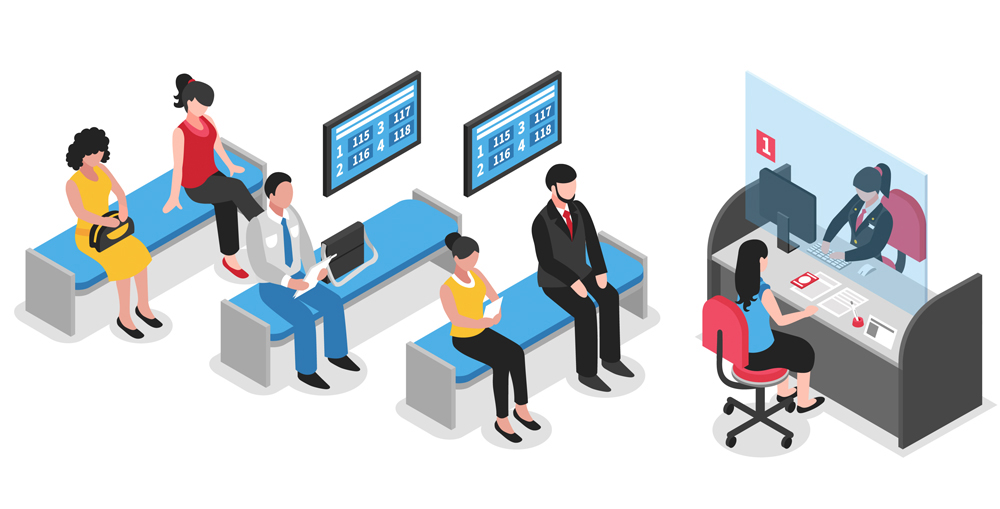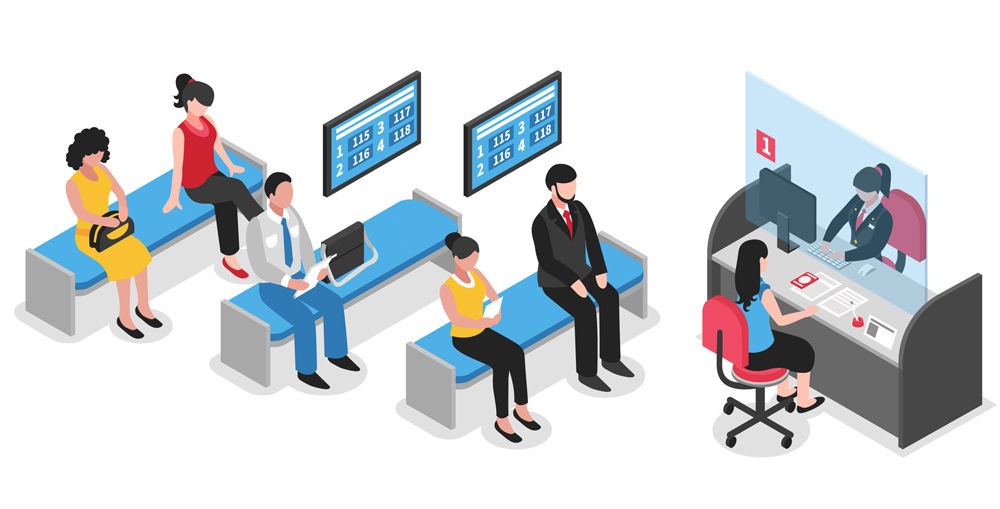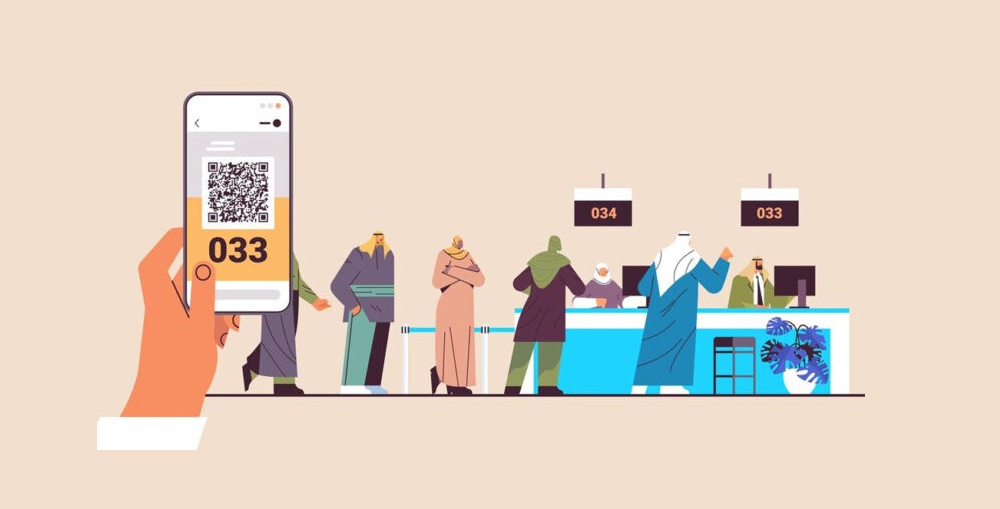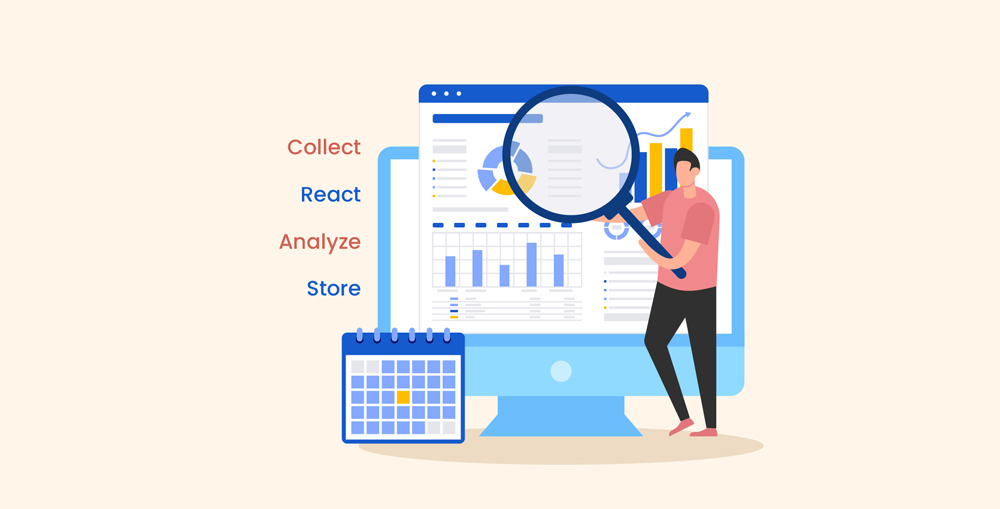Customer facing environments are most sensitive part of a business’s operations. It is extremely important for a business to maximize the operational productivity to ensure the customers are having a satisfactory experience. For large businesses with multiple branches the management is even more challenging. Usually the senior management is sitting in the head office, it is a time taking process to get the updates and information related to any branch. Most of the time the head office will have to approach the branch manager to provide them the required information. The queuing and customer flow management is always difficult. Therefore businesses need a digital queue management system which can help them streamline their customer flow and improve their operational capabilities. The digital queue management system provides live queuing coverage, instant updates, alerts/notifications, business intelligence data and useful features for service agent, branch managers, head office and senior management. The queue management system is an intelligent software solution with hardware components to offer a full control and monitoring over the customer journey which helps improving customer experience. In this guide we will discuss how business can implement and leverage a multi-branch queue management system to drive growth.

What is a Multi-Branch Queue Management System?
A multi-branch queue management system is a centralized queue management system which enables businesses to manage and monitor customer queues and customer flow in real-time across all connected branches. The multi-branch queue management system runs on a centralized software which is hosted on an in-premises server, online or in cloud. The server is connected to all branches. A basic queue management system have multiple devices integrated in a synchronized framework. For example, there is an interactive self-service ticket dispensing kiosk which not only dispense tokens but also take basic information of the customer and in some cases it has ability to ID the customer as well. There is a digital signage screen which displays the live queuing information along with some multimedia content. The modern queue management systems also have integrated counter name plates which display counter number and the token number which is being served at the moment. Furthermore there is an audio announcement system which is used for customer calling. All these devices form one branch’s setup, and if there are more than one branch, in case of a multi-branch queue management system all these devices in all branches are connected to a centralized queue management software which monitor and control all these components of the system.
See Also: What are the Different Types of Queue Management System?
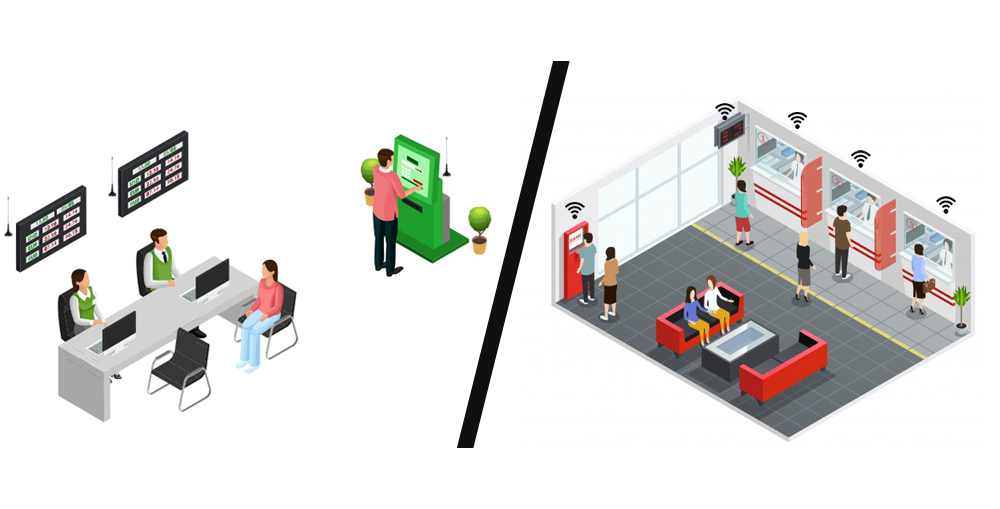
How does a Multi-Branch Queue Management System Works?
The multi-branch queuing also works on the concept of queue management system and crowd control, but it provides additional management features which greatly improve the efficiency of the queuing process. In a multi-branch queue management system setup all branches are connected via network to the main server software. The server application communicates with all branches in real-time. Whenever any action is taken in any branch the information is sent to the server and then the response is sent to the branch instantly. Think of a website, the website is hosted on a cloud which might be located in another continent, however, when you click on a link or a file, it immediately opens it. Same technical process works here too. When a user/customer in any branch choose a service to generate a token number, the information is sent to the queue management system software which is hosted on a server, and then in return it issues a token number which is being printed out instantly from where the user/customer made the request. All branches are connected to the head-office in a similar fashion via a public or private network. The smart algorithms and source code is executed at the server, and all the data is also stored in the server. The service agents, branch managers, and the senior management or head office staff gets their dedicated administrative dashboards and the access to data and functionality is managed by an in-built administration and authentication module. That is how a multi-branch queue management system works.
See Also: What are the Basic Components of Queue Management System?
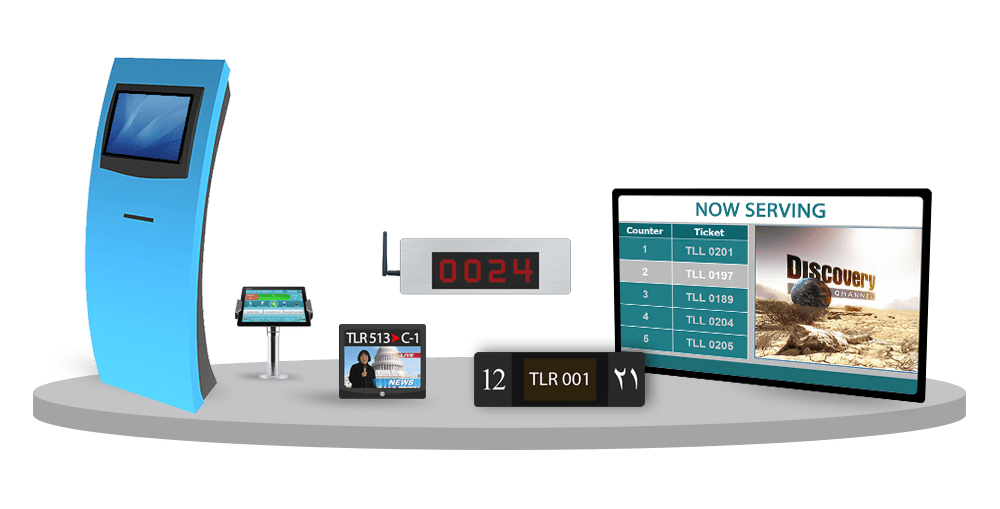
What are the Benefits of using a Multi-Branch Queue Management System?
The biggest advantage of a multi-branch queue management system is that it offers a centralized management framework where all the information are stored in a central location, which makes management and monitoring much easier comparing to standalone queue management system. If each branch have a standalone queue management system then the information will be stored in silos, which poses monitoring and management challenges. Furthermore the senior management or head office doesn’t require any intermediate database/integration to consolidate all the information flowing from and towards all branches. Here are the key benefits of a multi-branch queue management system:
- Easy Monitoring and Administration from a centralized location
- All the data and updates are available in a centralized location which enables real-time monitoring and control over all connected branches
- Since there is only one main queue management system software, therefore the implementation, operational and maintenance cost is low
- All the dashboards are updated in real-time, the content/configurations can be pushed in real-time to all connected branches
- Handling large footfall, congestion, and several other problems is easy with real-time monitoring and it enables the management to take quick and informed decisions
- Enables real-time monitoring of customer flow, customer wait time, employee performance and other queuing metrics and system stats
- Senior managers, branch managers, supervisors and stakeholders have up-to-date information and data all the time, there is no lag or latency
- Easy integration with third-party software tools, customer databases, and central information center help driving efficiency and productivity
See Also: How Queue Management System can Boost Productivity and Profitability?
A multi-branch queue management system is essential for businesses who are managing multiple branches in remote locations, it help them minimize the administrative efforts while maximizing the operational productivity.

What are the Best Practices for Implementing a Multi-Branch Queue Management System?
Implementing a multi-branch queue management system is a crucial task. The businesses should be very careful in choosing the right vendor, technology, queuing system type and several other factors. Here are some key points that a business should consider while implementing a multi-branch queue management system:
- Identify your requirements and make a plan of what features you want to include
- Find and shortlist multiple queue management system vendors
- Scrutinize all vendors, evaluate proposals and finalize the best vendor
- Choose the right platform and queuing type for your business
- Always start with a pilot project, implement the system at one or maximum two branches
- Train your employees, provide them with the manuals and required technical support, etc.
- Now closely observe the performance of the branch and try to find what can be improved
- Take feedback from customers, employees, managers and relevant stakeholders
- Discuss and share your observations and finding with the vendor and make improvements
- Monitor the system and evaluate the changes you made, and repeat until your customers are satisfied
- Now go for full-fledge implementation or start implementing in remaining branches one-by-one
If you will consider the above suggestions you can save a lot of time and efforts.
See Also: How to Implement a Queue Management System at an Airport?
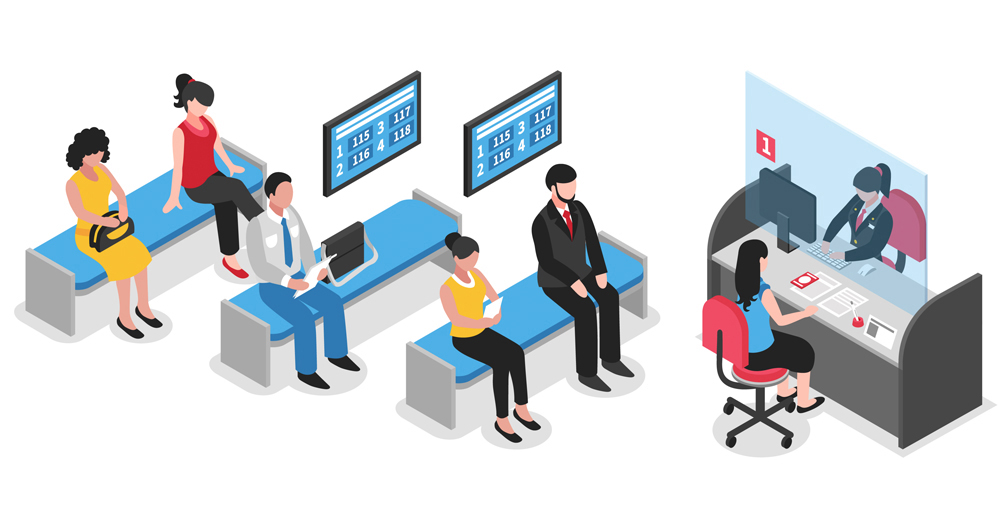
What are the Challenges of Implementing a Multi-Branch Queue Management System?
Implementing a multi-branch queue management system is not an easy task, there are several challenges that a business could face while implementing a multi-channel queue management system, such as:
- Initial Cost: One of the biggest challenge is the initial cost, if you are planning to implement a multi-branch queue management system across all branches at once, the cost could be very high. That is why the best practice is to start with pilot project, and implement the queue management system to all branches in small chunks, such as one-by-one, or 2 or 3 branches at a time, etc.
- System Integration: When you are implementing a multi-branch queue management system or any other system, the biggest technical challenge is the integration with other tools, and data synchronization. A modern queue management system with customer-friendly features would require many different types of integration. If your existing IT infrastructure and other systems are not compatible then you might have to develop intermediate tools to streamline the data flow.
- Employee Training: Whenever a business implements a new solution they require training for the employees, same is the case with the multi-branch queue management system. You must have to train your employees in order to enable them to leverage the full potential of the queue management system. User manuals, guides, and training videos can be created to make your employees well versed with your new multi-branch queue management system.
See Also: What are advance components of Queue Management System?
It might sound difficult and a bit challenging though but implementing a multi-branch queue management system is not as that challenging. Businesses will have to face all these challenges whenever they implement a new system. However, a queue management system is relatively easier to work with, furthermore the business can use customized UIs and branding tactics to reduce the training needs.
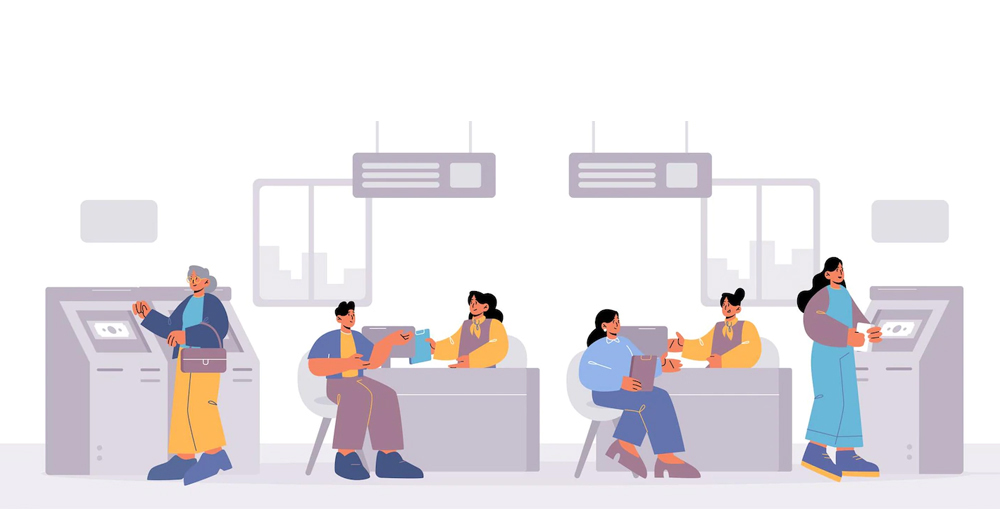
Conclusion
The customer satisfaction is essential for growth and stability. Businesses are always eager to implement solutions and offer services to raise the customer satisfaction. Businesses managing multiple branches always face administrative issues, the visibility and data flow is one of the most challenging task in any multi-branch setup. That is why when it comes to queue management system, most of the businesses in Dubai, Sharjah, Abu Dhabi and other emirates of UAE prefer to implement standalone systems. However, that is not ideal, in order to leverage the full potential of a modern queue management system businesses need a comprehensive multi-branch queuing solution. A multi-branch queue management system is a very effective tool, it help businesses dealing with technical challenges, and it offer real-time monitoring and control over all branches. That is what makes it most effective. In this guide we have discussed multi-branch queue management system in brief details and tried to answer most of the questions a business could have while planning to implement a multi-branch queue management system. If you want to learn more about the subject or if you want our help to implement a customized and very cost-efficiency multi-branch queue management system for your business, please feel free to contact us through our Contact Us page or leave a comment in the comment box below and we will get in touch with you soon.
See Also: Queue Management System for Trucks and Logistic Centers
